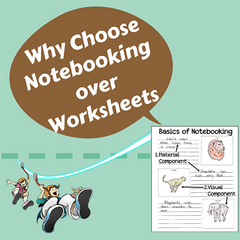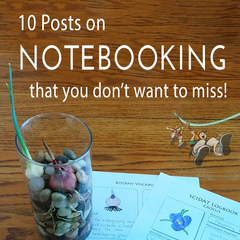Writing for homeschool science - what should it look like? How much is too much? And how do you know if you are doing it right?
We have shared a lot about science writing, or record-keeping as we like to call it, over the years. It's the third key to teaching science, so it's definitely important to understand.
That's why we wanted to gather all those tips into one easy-to-find place!
In this how-to guide, we'll explore the concepts of narration and notebooking, which are our preferred methods of record-keeping for science. We trust that these tips and tools will help you master writing for homeschool science!
Let's dig in...
The Ultimate How-to Guide for narration, notebooking, and writing for homeschool science
Writing in Science
Writing is the third key to teaching science. You can read more about your options for writing and why it is one of the keys here:
No matter what kind of writing you have your students do, they will progress through stages as they develop their writing skills. To learn about these stages, check out the following two podcasts:
And finally, before you have your students write down a word, be sure to always discuss the materials that they read.
Notebooking and Narration
When it comes to our preferred method of writing, let's start at the beginning:
Now that you understand what notebooking is, you'll want to see why we recommend notebooking over worksheets:
Once you understand the fundamentals of notebooking, it's important to dig deeper into what narration really is. After all, pictures are important, but the narration is the heart of what the student has learned from the lesson. Because narration is so different at the beginning from the typical regurgitation of random facts, there are lots of "how-to" questions surrounding narration. Here is a post addressing the top five questions:
And here is a podcast that gets to the core of the narration issue:
And since narration usually goes hand-in-hand with reading aloud, don't miss these five sanity-saving tips for reading aloud to your kiddos.
After you have a handle on narration, it's time to get started with notebooking. These steps will help you do just that:
As you become more comfortable with notebooking, you can check out these articles to help those skills develop:
- How to use notebooking with different ages
- 3 Content related tips for notebooking
- 7 Organizational tips for notebooking
And with all these tips and tools in your homeschool-teacher belt, you'll be ready for writing in science.
Wrapping it up
Writing in science is a key part of our overall plan for teaching science and we trust that this ultimate how-to guide will help you succeed with this key for teaching science!


